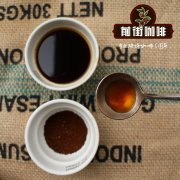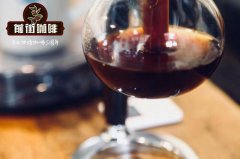Costa Rican Rose Summer Coffee introduction to Costa Rica COE27 Tangmeo Manor

Professional coffee knowledge exchange more coffee bean information please follow the coffee workshop (Wechat official account cafe_style)
Qianjie Coffee-treatment of Rose Summer Honey at Tangmeo Manor in COE27, Costa Rica
Treatment of Rose Summer Honey in COE27 Tangmeo Manor, Costa Rica
Bean name: Don Mayo Honey Tangmei Aomi treatment
Manor: Beneficio Don Mayo Tang Mayo processing Plant
Producing area: Tarazhu (Tarrazu)
Variety: Kaddura (Caturra)
Treatment method: honey treatment method
Although the Tang-Mayo treatment plant has a history of 15 years, it is actually a young processing plant-the family cooperative was founded in 1994, but did not set up its own treatment plant until 2005. Located about five kilometers north of Tarazu-San Marcos town, the processing plant is responsible for the research and development of processing technology and the implementation of postharvest treatment for the ten coffee estates joined; as these estates are distributed on hillsides of 1500-1950 meters above sea level, Tang-Mayo's coffees are all SHB grade.
Traditionally, Costa Rica prides itself on its washed coffee-picking ripe red-purple berries by hand and tightly controlling the soaking and fermentation process. Not much and not a lot of fermentation makes the coffee a perfect balance between clarity and complexity.
In recent years, however, this tradition is no longer dominant-the new "dry" treatment has become a trend, and micro-processing plants have been set up one after another. Because the water consumption is only 5% of that of traditional washing plants, and there is no need for huge sinks and exposure fields-these micro-treatment plants can be far away from the riverbank; at the same time, the investment required is relatively small, making it affordable for many independent estates or small cooperatives. More importantly, with the new treatment method and the courageous manor owner, a kind of "honey-treated coffee" with low acidity, high complexity and rich sweet flavor has become the target of competition in the coffee industry in recent years. In recent years, the outstanding ones have shone brilliantly in the major competitions, which have greatly enhanced the international popularity of the estates-for example, Brumas, Herbazu, Helsar, Las Lajas, Don Mayo, Montes de Oro.
Because the characteristics of honey-treated coffee depend to a high extent on the setting of the pulp scraper-the more pulp you retain, the more obvious the characteristics of honey treatment. This Costa Rican COE 27 rose summer honey treatment has distinct flavors of jasmine, grass, lemon, peach, caramel, green apple and almond sugar, with complex acidity of lactic acid and citric acid, long finish, creamy touch and round fullness.
Important Notice :
前街咖啡 FrontStreet Coffee has moved to new addredd:
FrontStreet Coffee Address: 315,Donghua East Road,GuangZhou
Tel:020 38364473
- Prev

Costa Rican Coffee Costa Rica CO E27 introduction to the treatment of Rose Summer Honey at Tangmeo Manor
Professional coffee knowledge exchange more coffee bean information please follow the coffee workshop (Wechat official account cafe_style) Front Street Coffee-Costa COE27 Tangmeo Manor Rose Summer Honey treatment introduction beans name: Don Mayo Honey Tangmeo treatment Manor: Beneficio Don Mayo Tangmeo processing Plant production area: Tara Zhu (Tarrazu) Variety: Kaddura (Caturra)
- Next

Panamanian Poquet Catova Orange Manor how about the coffee of the Orange Manor?
Professional coffee knowledge exchange more coffee bean information please follow the coffee workshop (Wechat official account cafe_style) the front street coffee Panamanian Poquet Catova Orange Manor introduction Orange Manor belongs to the famous Kotowa Manor, 1918, Canadian Alexander Duncan MacIntyre settled in the Poquet area blowing the cool mountains of the Poquet Mountains
Related
- Does Rose Summer choose Blue, Green or Red? Detailed explanation of Rose Summer Coffee plots and Classification in Panamanian Jade Manor
- What is the difference between the origin, producing area, processing plant, cooperative and manor of coffee beans?
- How fine does the espresso powder fit? how to grind the espresso?
- Sca coffee roasting degree color card coffee roasting degree 8 roasting color values what do you mean?
- The practice of lattes: how to make lattes at home
- Introduction to Indonesian Fine Coffee beans-- Java Coffee producing area of Indonesian Arabica Coffee
- How much will the flavor of light and medium roasted rose summer be expressed? What baking level is rose summer suitable for?
- Introduction to the characteristics of washing, sun-drying or wet-planing coffee commonly used in Mantenin, Indonesia
- Price characteristics of Arabica Coffee Bean Starbucks introduction to Manning Coffee Bean Taste producing area Variety Manor
- What is the authentic Yega flavor? What are the flavor characteristics of the really excellent Yejasuffi coffee beans?

